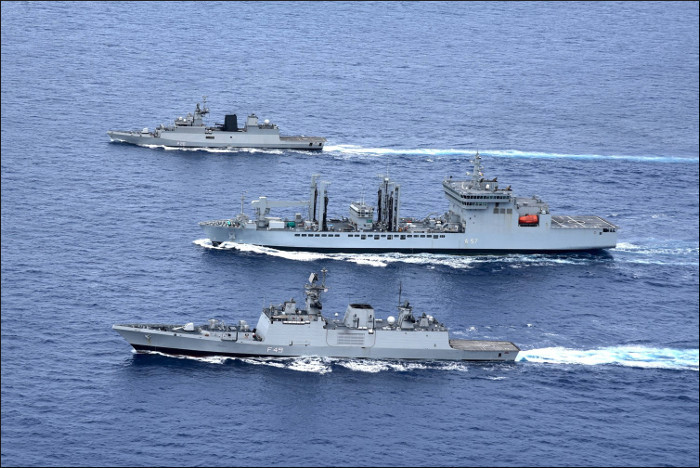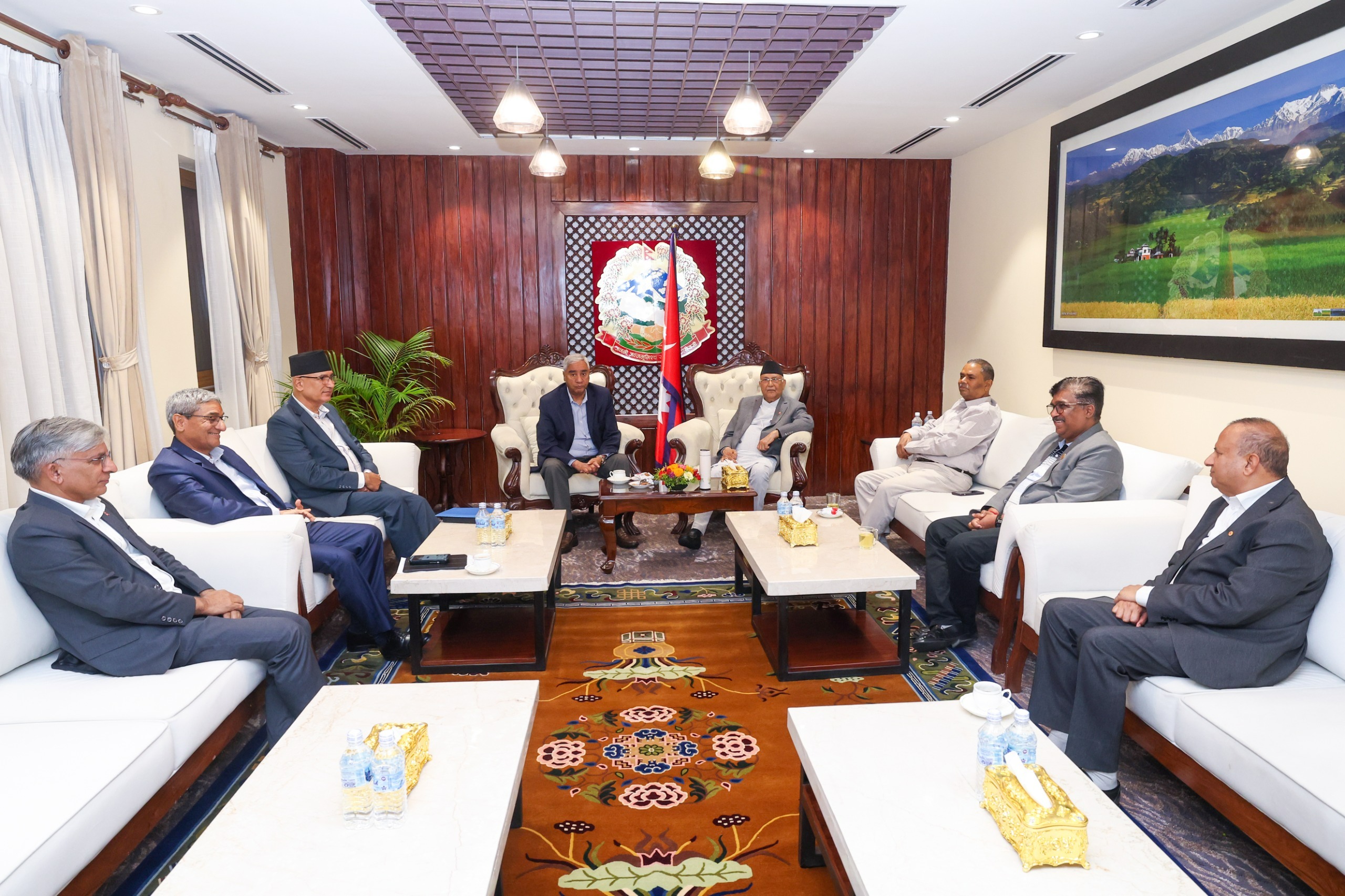China “takes note” as the Quad is set on the Malabar drills

Image Credit: Indian Navy. Eastern Fleet Ships Underway to Guam, US for Exercise Malabar 2018.
Kathmandu. The Line of Actual Control (LAC) has been the staging ground for China-India tensions since early May. The 8th round of high-level military talks is slated to take place this week in order to further the talks on disengaging the troops on either side of the border. Meanwhile, India has been extending its influence along the Asia-Pacific, furthering its maritime interests within the vast oceans that surround the states in the region.
Amidst tensions with China, India has invited Australia to take part in the Malabar drills that already includes the participation of the other Quad members, Japan and the United States of America. India’s Defense Ministry released a statement noting that the member-states of Quad “collectively support free, open and inclusive Indo-Pacific and remain committed to a rules based international order.” The Quadrilateral Security Dialogue or Quad, is an informal security alliance between India, Australia, the US, and Japan. With Australia rejoining the exercise for the first time since 2007, all four members will be engaged in the military drills.
The recent Quad meetings saw a particular hostile stance towards Beijing, especially in the words of the US Secretary of State, Mike Pompeo. The exercises come at a time when two of the Quad states, the US and India, are already engaged in some form of open and tense conflict with China. The naval exercises began in 1992 with India and the US conducting bilateral trainings, with Japan formally joining it in 2015.
This year, the US is set to bring in the USS Nimitz, the largest aircraft carrier in the world, amongst many advanced navy equipment that includes the P-8A Poseidon aircraft, and a Los Angeles-class fast-attack submarine. India is set to deploy its INS Vikramaditya, a 44,570 tonne aircraft carrier, two made-in-India Shivalik frigates, two Russian-built INS Ranvir, and the INS Kamorta. Japan will, moreover, include its 27,000 tonne helicopter carrier Izumo, Japan Maritime Self-Defense Force and JS Sazanami (DD 113) that will participate amongst almost 20 warships.
Analyzing the developments. Derek Grossman, researcher at the RAND Corporation claimed that, “It would send a significant message to China that the Quad – US, Australia, Japan, and India – are de facto conducting joint naval exercises, even if not technically conducted under the auspices of a Quad event.” China had previously objected to the 2007 drills that included Australia, with a senior Indian official noting that Beijing had sent démarches to all four states to gain an understanding of the situation back then.
Reflecting on the current situation, the spokesman for the Chinese foreign ministry, Zhao Lijian commented that Beijing had “taken note of this development.” He also mentioned that, “We always believe that military cooperation between countries should be conducive to regional peace and stability.”
Along with this is the matter of consideration that New Delhi may be moving towards the direction of holding formal trade deals with Taipei. Though this has not been confirmed through formal channels, Beijing has been constantly warned New Delhi to remain cautious of its dealings with Taiwan, apparent in the letter sent by the Chinese Embassy in India to the Indian Media to not recognize the National Day of Taiwan. On the subject of the trade deals, Zhou said that “The One-China principle is the common consensus of the international community, including India, and also serves as the political foundation for China to develop relations with any country.”
Beijing is getting anxious, and that has been apparent in the Chinese President, Xi Jinping’s advise to the Chinese marines to “prepare for war.” With Australia joining the navy drills and the possibility of India moving towards forming deeper ties with Taiwan, the disengagement talks may not deliver significant results. The clash at eastern Ladakh has resulted in a massive roadblock within the bilateral associations between China and India. The Malabar drills will not help to allay China’s concerns of the Quad ganging up on the state, and neither will the talks of trade deals with Taiwan. The drills will be a sight to witness, however, a critical eye must be kept on Beijing’s response in the future.
Facebook Comment
latest Video
Trending News
- This Week
- This Month
















